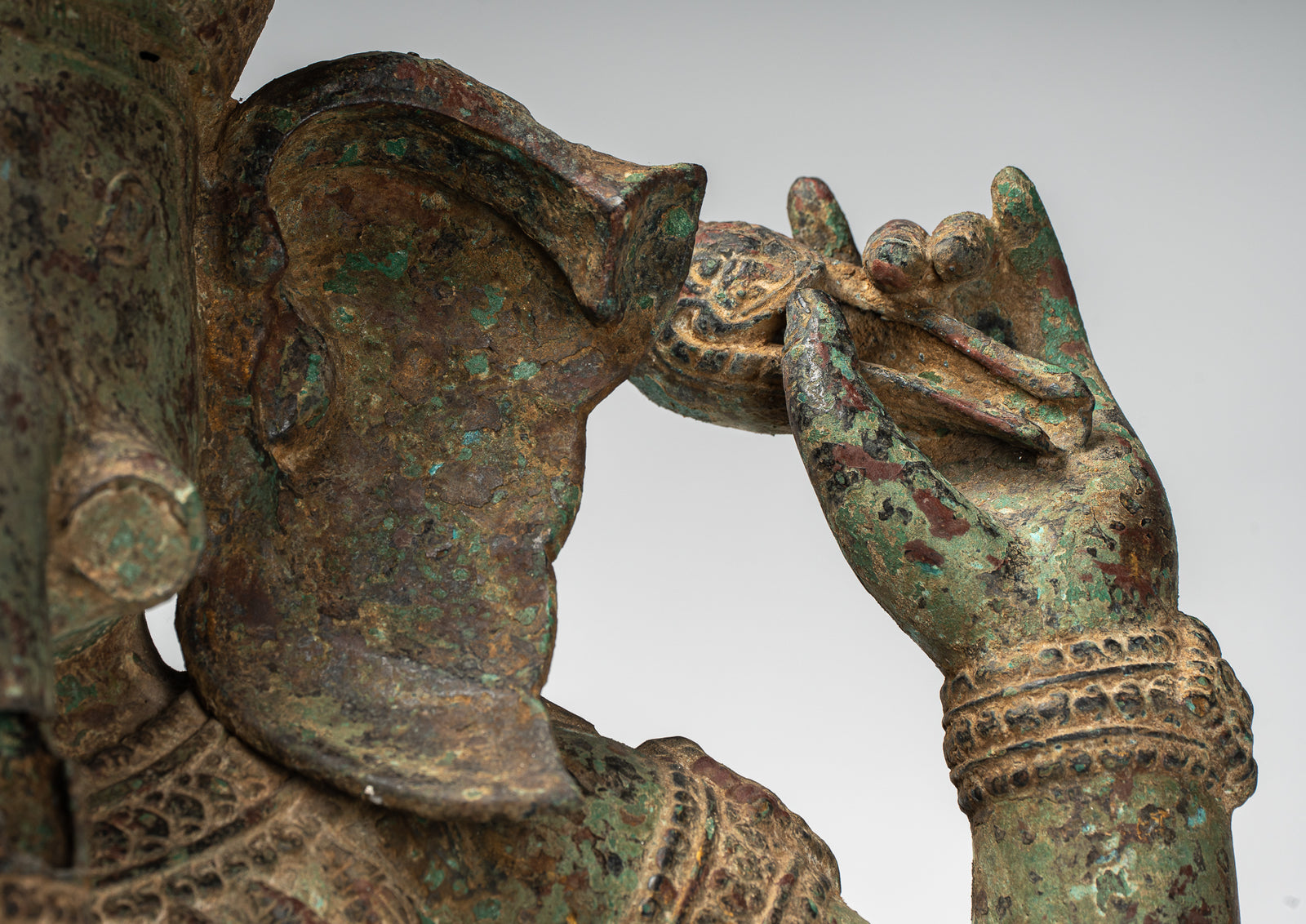
Ganesha and the Conch Shell: Symbolism and Spiritual Significance
Introduction
In the vast pantheon of Hindu deities, Lord Ganesha stands out as a beloved and revered figure, often recognized by his distinctive elephant-headed form. The iconography of Ganesha is rich with symbolism, each attribute carrying profound spiritual meaning. One of the intriguing elements in the imagery of Ganesha is his association with a conch shell.
In this blog post, we will explore the symbolic significance and spiritual meaning behind Ganesha holding a conch shell.
-
Ganesha: Remover of Obstacles: Before delving into the symbolism of the conch shell, it's essential to understand the overarching role of Ganesha in Hinduism. Ganesha, the son of Lord Shiva and Goddess Parvati, is widely revered as the Remover of Obstacles and the Lord of Beginnings. Devotees invoke Ganesha's blessings at the outset of any endeavor to ensure success and the removal of impediments.
-
Symbolism of the Conch Shell: The conch shell, known as "shankha" in Sanskrit, holds immense symbolic significance in Hinduism. It is considered one of the divine emblems associated with various deities. When Ganesha is depicted holding a conch shell, it adds layers of meaning to his divine persona.
-
Purity and Auspiciousness: The conch shell is traditionally associated with purity and auspiciousness. Its sound is believed to symbolize the sacred cosmic sound that emanates at the creation of the universe. Ganesha holding the conch signifies his association with divine purity and the auspicious energy that underlines the creation of new beginnings.
-
Divine Sound and Creation: In Hindu cosmology, the sound of the conch is associated with the creation of the universe. Ganesha's connection with the conch emphasizes his role as a divine force involved in the cosmic dance of creation. The resonance of the conch is considered a manifestation of the divine sound that echoes through the cosmos.
-
Call to Spiritual Awakening: The conch shell is often blown during religious ceremonies and rituals to signify the call to spiritual awakening. Ganesha, as the embodiment of wisdom, is associated with guiding individuals on their spiritual journey. The conch in his hand serves as a metaphorical call to seekers, urging them to awaken to higher consciousness and divine knowledge.
-
Overcoming Obstacles with Divine Sound: Ganesha's association with the conch also suggests the idea of overcoming obstacles through the divine sound. The resounding vibrations of the conch are believed to dispel negativity and create an atmosphere conducive to spiritual growth. Ganesha, with the conch in hand, symbolizes the power to overcome impediments with the divine resonance of spiritual wisdom.
-
Alignment with Cosmic Rhythms: The conch, when blown, is considered a symbol of aligning oneself with the cosmic rhythms. In the context of Ganesha, it signifies his harmonious connection with the cosmic order and the divine plan. Ganesha's presence, marked by the conch, is a reminder to individuals to align their lives with the greater cosmic harmony.
-
Protection and Blessings: As the Remover of Obstacles, Ganesha holding the conch also symbolizes his protective presence. The divine sound emitted by the conch is believed to create a shield of spiritual energy, offering protection to devotees and bestowing blessings for a smooth journey through life's challenges.
Conclusion
The symbolism of Ganesha holding a conch shell goes beyond the visual aesthetics of religious iconography. It is a profound representation of purity, auspiciousness, divine sound, and the cosmic dance of creation.
Ganesha, with the conch in hand, invites devotees to embark on a spiritual journey, overcome obstacles, and align their lives with the harmonious rhythms of the cosmos.
In the intricate imagery of Lord Ganesha, the conch shell becomes a powerful emblem, resonating with the timeless wisdom and spiritual guidance that the deity offers to seekers on the path of self-discovery and divine realization.














